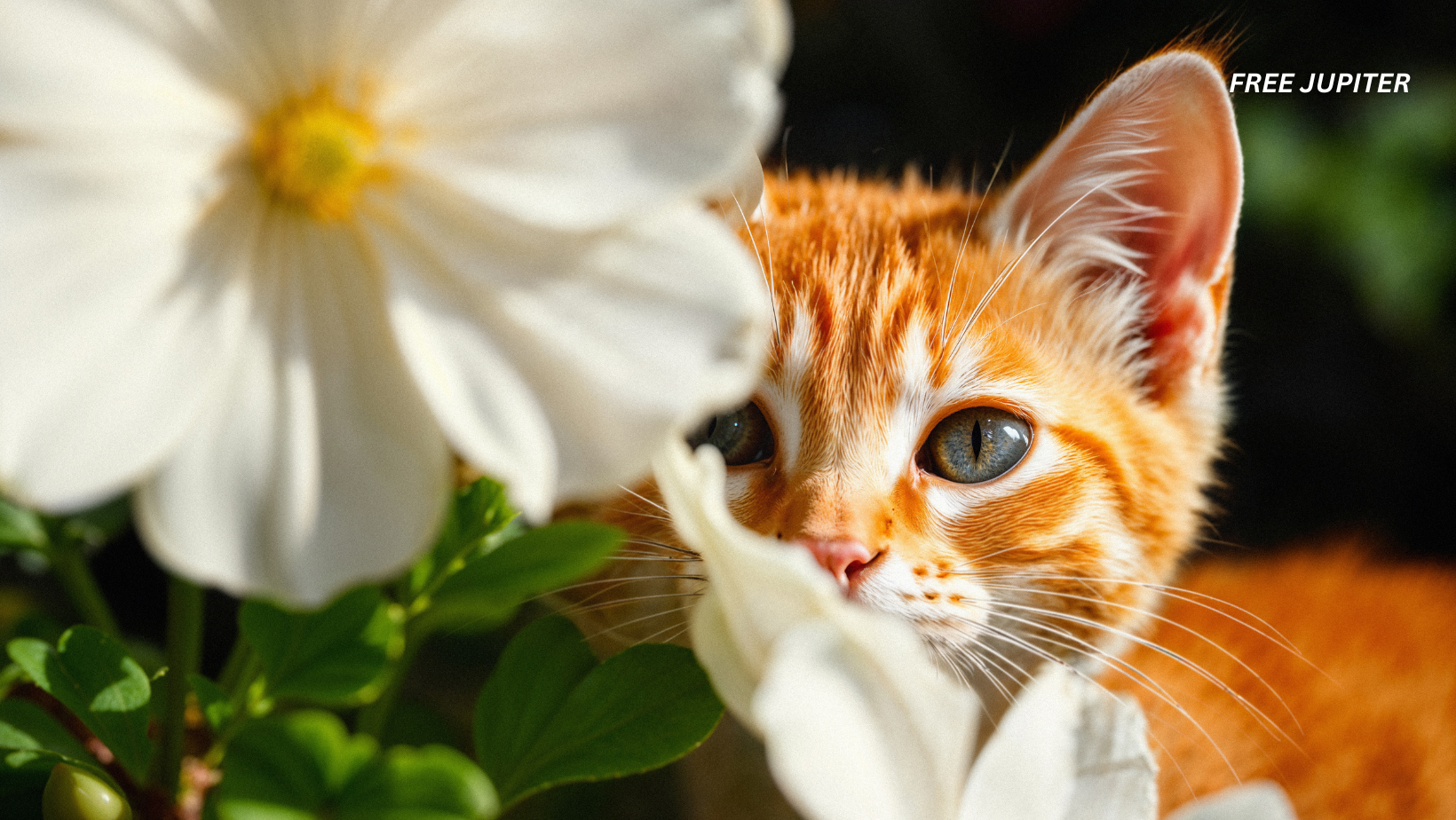Friendly Note: FreeJupiter.com shares general info for curious minds 🌟 Please fact-check all claims—and always check health matters with a professional 💙
If you’ve ever spent time scrolling through cat videos, chances are you’ve stumbled across a few orange cats doing something hilariously ridiculous—launching themselves off furniture, chasing invisible enemies, or randomly chomping on their owner’s ankles. These ginger goofballs have gained a bit of a reputation online for being overly dramatic, strangely affectionate, and just a tad… offbeat.
But is there any science behind the idea that orange cats are naturally goofier than their fellow felines? Or is it just the internet being, well, the internet?
Let’s unpack what researchers know—and don’t know—about the quirky world of orange cats.
First Things First: Orange Is a Color, Not a Breed
It’s important to note that “orange cat” doesn’t refer to a specific breed. Instead, it’s a coat color that can show up in many types of cats—Maine Coons, Munchkins, American Bobtails, Siberians, and beyond. This means any assumptions about their behavior would have to stretch across a whole bunch of breeds with very different genetic makeups. That’s already a bit of a scientific challenge.
Still, despite this genetic variety, many cat lovers insist that orange cats share a unique personality—clumsy, friendly, attention-seeking, and maybe a little extra when it comes to being dramatic.
The Gene Behind the Ginger
In 2023, researchers pinpointed the gene responsible for a cat’s orange coloring. It’s called ARHGAP36, and it lives on the X chromosome. This helps explain why most orange cats are male.
Here’s the simple version: female cats have two X chromosomes, so they need two copies of the orange gene to have an orange coat. Males only have one X (paired with a Y), so they need just one copy. As a result, orange males are far more common than orange females.
But here’s where it gets interesting—ARHGAP36 doesn’t just affect fur color. Scientists have noticed that this gene is also active in the brain and hormone-producing organs in both humans and mice. That opens up the possibility that it could influence behavior as well.
Read more: New Study Finds Tortoises Exhibit Emotions Similar to The Way Humans Do
The “Friendly Orange Cat” Stereotype
Back in 2015, a couple of studies tried to explore whether cat coat color had any connection to personality. In one small survey-based study published in Anthrozoös, respondents were more likely to describe orange cats as “friendly.” Another larger study in the Journal of Veterinary Behavior found some subtle links between coat color and behavior—but most personality traits still seemed to be tied to breed more than color.
Dr. Carlo Siracusa, a veterinary behaviorist involved in the study, said that while coat color wasn’t the dominant factor, there were some patterns. For example:
- Lilac-colored cats were reported to be more playful and anxious when separated from their humans.
- Tortoiseshell cats were supposedly less aggressive toward dogs.
- Piebald cats (those with random white patches) tended to be quieter.
When it came to orange cats, however, the findings didn’t exactly match the internet’s perception.
“They were actually more likely to show fear-based aggression towards strangers,” Siracusa noted. That’s right—some of those seemingly silly orange cats may actually be acting out of fear or caution.
But Can We Trust These Findings?
Before you cancel your dream of adopting a cuddly ginger fluffball, here’s something to keep in mind: most of the research on cat personality and color relies on surveys—people answering questions about how they think their cat behaves. That means there’s plenty of room for bias.
As Siracusa points out, if the internet has convinced people that orange cats are sociable and silly, then that belief might influence how people perceive (and report on) their orange cats. It’s a bit of a loop: we expect orange cats to be goofballs, so we notice and remember the goofball behavior more often.
Still, there’s something to be said for patterns that show up across lots of people’s experiences—even if they’re anecdotal.
Read more: Scientists Say We May Be Wrong About Where Spiders Came From
Could There Be a Deeper Genetic Connection?
Let’s go back to that ARHGAP36 gene. Although its primary job is to influence coat color, it’s also active in places like the brain and glands that regulate hormones. In both humans and animals, the cells that give skin and fur their color (pigment cells) actually originate from a part of the embryo called the neural crest.
The neural crest doesn’t just handle pigment. It also helps form parts of the nervous system and hormone-producing glands. Some researchers think this overlap might explain why certain coat colors could be associated with specific temperaments.
Hiroyuki Sasaki, a geneticist from Kyushu University in Japan, suggests it’s possible that mutations in this gene might influence behavior by affecting how certain brain cells or hormones develop. But he’s quick to add: this is purely speculation. So far, there’s no conclusive proof.
So, Are Orange Cats Truly Different?
The scientific jury is still out. While a handful of studies suggest that coat color might play a minor role in shaping a cat’s behavior, it’s not the whole picture. Breed, environment, early life experiences, and even the personality of the cat’s human can have a much bigger impact.
And even if there was a clear genetic link between coat color and behavior, exceptions would always exist. Siracusa often sees pet owners who are baffled when their cat’s personality doesn’t match the stereotype of its breed or color.
“I get clients who chose a pet based on reputation, and then they’re surprised when it turns out completely different,” he says.
Read more: Swarms of Fireflies Are Lighting Up Illinois Again—And Scientists Say There Is Hope
One Thing’s for Sure: Cats Are Individuals
With more than 70 million cats living in homes across the U.S., it’s surprising how many mysteries still surround them. But as Sasaki puts it, science tends to focus on problems that impact human or animal health, so quirky questions like “Why is my orange cat so chaotic?” often get pushed aside.
Still, those mysteries are what keep things interesting. Maybe your orange cat is a lovable mess. Or maybe they’re calm and reserved. Either way, color alone doesn’t determine destiny.
So the next time you see an orange cat climbing the curtains or tackling the family dog, just remember—there might be some science behind the madness. Or maybe they’re just being their unique little selves. Either way, they’re keeping life entertaining.










